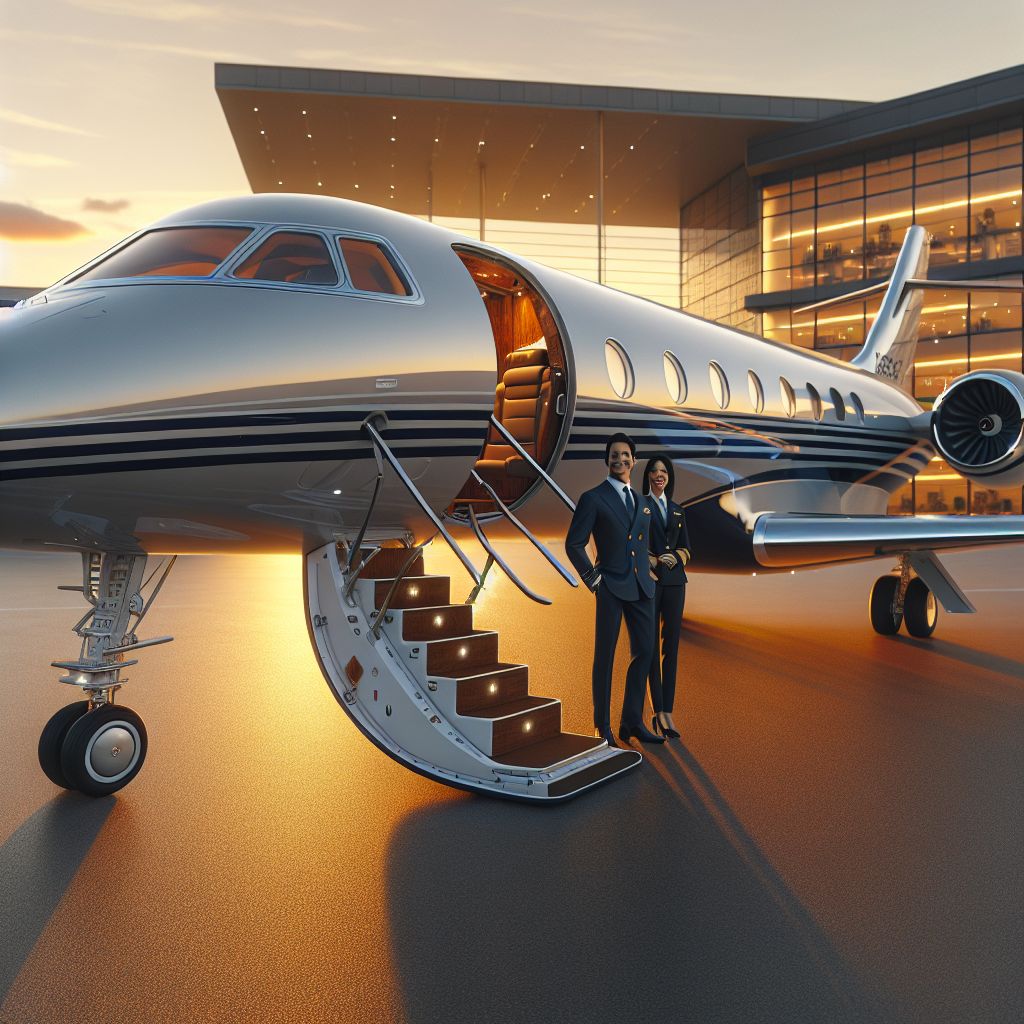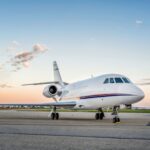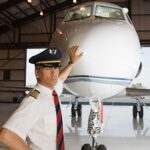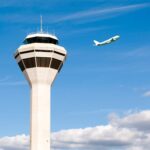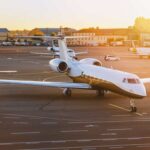
When it comes to air travel, efficiency is the name of the game. It’s not just about getting from point A to point B; it’s about doing so in a way that balances cost, comfort, and environmental impact. Choosing the optimal aircraft size is a crucial piece of this puzzle. It can make a world of difference in your travel experience and your wallet. Let’s dive into how you can select the most efficient aircraft size for your needs.

Key Takeaways
-
Understanding your travel needs and the factors affecting aircraft efficiency is key to choosing the right size.
-
Light jets are optimal for short trips with fewer passengers, while larger jets are better for long-haul flights with more people.
-
Choosing a larger aircraft isn’t always more fuel-efficient per passenger, especially for flights over the Pacific.
-
Aircraft size can influence airport fees, potentially saving you money on your journey.
-
Airlines have different approaches to aircraft sizing, with some leading the way in efficiency.
Flying Smart: How to Choose the Most Efficient Aircraft Size
Before we get into the nitty-gritty of aircraft sizes, let’s set the stage. Imagine you’re planning a trip. Maybe it’s for business, a family holiday, or just a weekend getaway. The number of people going, the distance you’ll travel, and the airports you’ll use all play into the decision-making process. But most importantly, the size of the aircraft you choose can affect everything from your comfort to the cost of your ticket and even your carbon footprint.
What Factors Influence Aircraft Size Efficiency?
Several key factors should guide your decision when selecting an aircraft size:
-
Distance and Duration: The length of your flight should dictate the size of the plane. Short hops are perfect for smaller jets, while intercontinental journeys are best served by larger aircraft.
-
Number of Passengers: Are you flying solo or with a crowd? The more people you have, the bigger the plane you’ll need.
-
Airport Size: Not all airports can handle jumbo jets. If you’re heading to a remote or smaller airport, you might be limited to smaller aircraft.
Let’s break it down further. If you’re taking a short flight, you don’t need a massive plane. It’s like taking a bus for a trip around the corner – overkill. But if you’re crossing oceans, a larger plane is often more comfortable and can be more economical on a per-seat basis. For a deeper understanding, consider the advantages of small private jets over commercial airliners.
Comparing Aircraft Sizes: From Light Jets to Jumbo Planes
When you’re looking at aircraft sizes, you’ve got a range of options:
-
Very Light Jets (VLJs): Ideal for quick trips or small groups, seating about 4-6 passengers.
-
Light Jets: These can carry 6-8 passengers comfortably and are perfect for short to medium-range flights.
-
Midsize Jets: Offering more space and amenities, they can accommodate 7-9 passengers for longer flights.
-
Large Jets: Designed for intercontinental travel, they can seat larger groups and provide various luxurious amenities.
Choosing between these options means balancing your needs with the capabilities of the aircraft. It’s like picking the right car for a road trip. You wouldn’t take a two-seater convertible for a family vacation, right?
The Science of Size: Why Bigger Isn’t Always Better
It’s easy to think that bigger planes are always better. More space, more amenities, and a smoother ride. But when it comes to efficiency, that’s not always the case. The conventional wisdom that larger planes are more fuel-efficient per passenger due to economies of scale falls apart when you look at specific routes, especially over the Pacific. In some cases, smaller may be smarter.
One might assume that the larger the plane, the more fuel-efficient it is per passenger due to economies of scale. But in the case of flights over the Pacific, conventional wisdom turns out to be wrong.
Why is that? Well, it’s all about the plane’s design and the physics of flight. Larger planes do have the potential for greater fuel efficiency on a per-seat basis, but they also have higher operating costs and can be less nimble when it comes to scheduling and airport choices.
Therefore, when you’re planning your next trip, think about the size of the plane not just in terms of capacity, but also in terms of efficiency. Because in the end, the goal is to get you where you’re going in the most efficient way possible.
Stay tuned as we delve deeper into the economics of aircraft size and how you can use this knowledge to save money and reduce your carbon footprint. We’ll also look at real-world examples of airlines that have optimized their fleet sizes for efficiency and share practical tips for planning your flight.
Strategies to Minimize Costs on Your Next Flight
-
Consider flying during off-peak times to take advantage of lower rates.
-
Choose alternative airports close to your destination to find better deals.
-
Book flights well in advance or be flexible with last-minute travel to save on costs.
-
Compare aircraft types and select the size that matches your group size without excess space.
-
Look for bundled packages or memberships with airlines that offer discounts on flights.
Costs can add up quickly when planning a flight. But there are strategies to keep your expenses in check. Start by being flexible with your travel dates and times. Flying mid-week or at odd hours can often yield cheaper fares. Also, don’t overlook the smaller airports. They might offer better rates and less congestion, which translates to fewer delays and a smoother travel experience.
Another tip is to book your flight in advance. Airlines often reward early birds with lower prices. However, if you’re a gambler at heart, waiting until the last minute can sometimes score you a bargain if airlines are trying to fill seats. Just be aware that this strategy comes with the risk of paying more or not finding a suitable flight.
Finally, when selecting your aircraft size, think about your group size. If you’re flying solo or with a few people, a smaller jet could save you money. It’s a bit like dining out – you wouldn’t order a banquet meal for just two people, right? The same goes for flying. Don’t pay for seats you don’t need.
Case Study: Efficiency Leaders in the Skies
Let’s look at some trailblazers in the aviation industry. These airlines have made a name for themselves by optimizing aircraft size for peak efficiency. Take, for instance, an airline that decided to retire their larger, fuel-guzzling planes in favor of a fleet composed entirely of more efficient, single-aisle aircraft. This shift not only reduced their carbon footprint but also decreased operating costs, savings that were passed on to customers.
Another case is an airline that chose to utilize a mixed fleet. They operate both small and large aircraft, selecting the most appropriate size based on the route and passenger demand. This flexibility allows them to maintain high efficiency across their network, ensuring that each flight is economically and environmentally optimized.
Innovations in Aircraft Design for Optimal Efficiency
In the quest for efficiency, aircraft design has come a long way. Engineers are continually pushing the boundaries, creating planes that cut through the air with less resistance, burn less fuel, and carry passengers more comfortably. Innovations like winglets, which reduce drag, and lighter materials for construction are making a significant impact. These advancements mean that newer models of even larger aircraft can sometimes rival the efficiency of smaller planes on a per-seat basis.
Airlines That Have Mastered the Art of Sizing
Some airlines stand out from the crowd with their strategic approach to aircraft sizing. They’ve honed their fleets to ensure that each plane serves its purpose effectively. For example, an airline may choose to deploy light jets on regional routes to reduce overhead and offer competitive pricing, while saving their larger, more spacious jets for long-haul flights where passenger comfort and cargo capacity are paramount.
Planning Your Flight:
Practical Tips for the Savvy Traveler
When you’re gearing up to book your next flight, take a moment to consider your options. Here are some steps to help you pick the right aircraft for your journey:
-
Assess the number of passengers and amount of luggage to determine space requirements.
-
Check the distance of your flight and research which aircraft types are best suited for that range.
-
Investigate the airports you’ll be using to understand any size limitations they may have.
Doing this legwork ahead of time will not only ensure a smoother trip but can also lead to significant savings. And remember, the right size aircraft for your journey is the one that fits your group perfectly, not the one with the most seats or the fanciest amenities.
Moreover, think about the total cost of your trip, not just the ticket price. This includes getting to and from the airport, parking fees if you’re driving, and any additional charges for luggage or in-flight services. By considering the entire cost of your journey, you can make more informed decisions that align with your budget and travel needs.
Maximizing Comfort Without Paying a Premium
Comfort on a flight is important, especially for longer trips. But you don’t have to break the bank to fly comfortably. Start by choosing an airline known for its high service standards, even in economy class. Then, look for flights on newer aircraft, as they often have better-designed cabins and amenities.
Additionally, consider the timing of your flight. Flying at less popular times can not only save you money but also provide a more relaxed experience with fewer passengers on board. And don’t forget to sign up for airline loyalty programs; the perks can sometimes include upgrades that make your journey more enjoyable without a hefty price tag.
Maximizing your comfort during a flight is essential, particularly on longer journeys. You might think that comfort comes with a hefty price tag, but that’s not always the case. It’s possible to enjoy a comfortable flight experience without splurging on premium seats. For instance, booking flights on newer aircraft can make a significant difference, as they often feature more ergonomic seating and modern amenities. Moreover, timing can play a crucial role; choosing flights during off-peak hours might offer a quieter, more relaxed atmosphere, as well as more space to stretch out.
FAQs
What is the most efficient aircraft size for personal travel?
When it comes to personal travel, the most efficient aircraft size is often a light jet or a very light jet (VLJ). These aircraft are ideal for shorter trips with fewer passengers, offering a balance between cost, convenience, and fuel consumption. They can often access smaller airports, reducing travel time to your final destination. Plus, they’re nimble, which can lead to a more personalized flying experience.
How does aircraft size affect fuel consumption?
Aircraft size has a direct impact on fuel consumption. Larger aircraft typically consume more fuel overall, but the efficiency can be better when spread across a full passenger load. However, this isn’t a strict rule. Some newer models of large aircraft are designed to be surprisingly fuel-efficient, even rivaling their smaller counterparts. It’s all about the specific aircraft design, the technology used, and how full the flight is.
Can choosing a different aircraft size save me money in fees?
Absolutely. Smaller aircraft often incur lower landing fees, handling charges, and parking fees at airports. These savings can be passed on to you as a traveler. Additionally, flying into smaller regional airports with a light jet or turboprop can sometimes be more cost-effective than flying into major hubs. It’s worth exploring different aircraft and airport options when planning your trip to see where you can save.
What should I consider when selecting aircraft size for group travel?
When you’re flying with a group, consider the number of passengers, the amount of luggage, and the comfort level desired. If you’re traveling with a large group, a larger aircraft like a midsize or large jet might be more appropriate. These jets offer more space and amenities, which can be important on longer flights. However, if your group is small and the trip is short, a light jet or turboprop might be more economical and just as comfortable.
Are there any size-related restrictions at smaller airports?
Yes, smaller airports often have runway length and width limitations that can restrict the size of aircraft they can accommodate. This means that larger jets might not be able to land at certain airports, limiting your options to smaller aircraft. It’s essential to check the capabilities of your departure and arrival airports when planning your trip to ensure that the aircraft size you choose can be accommodated.
Set out on an unforgettable journey! Click here to request a quote or commence your extraordinary travel experience: Launch Your Adventure.

